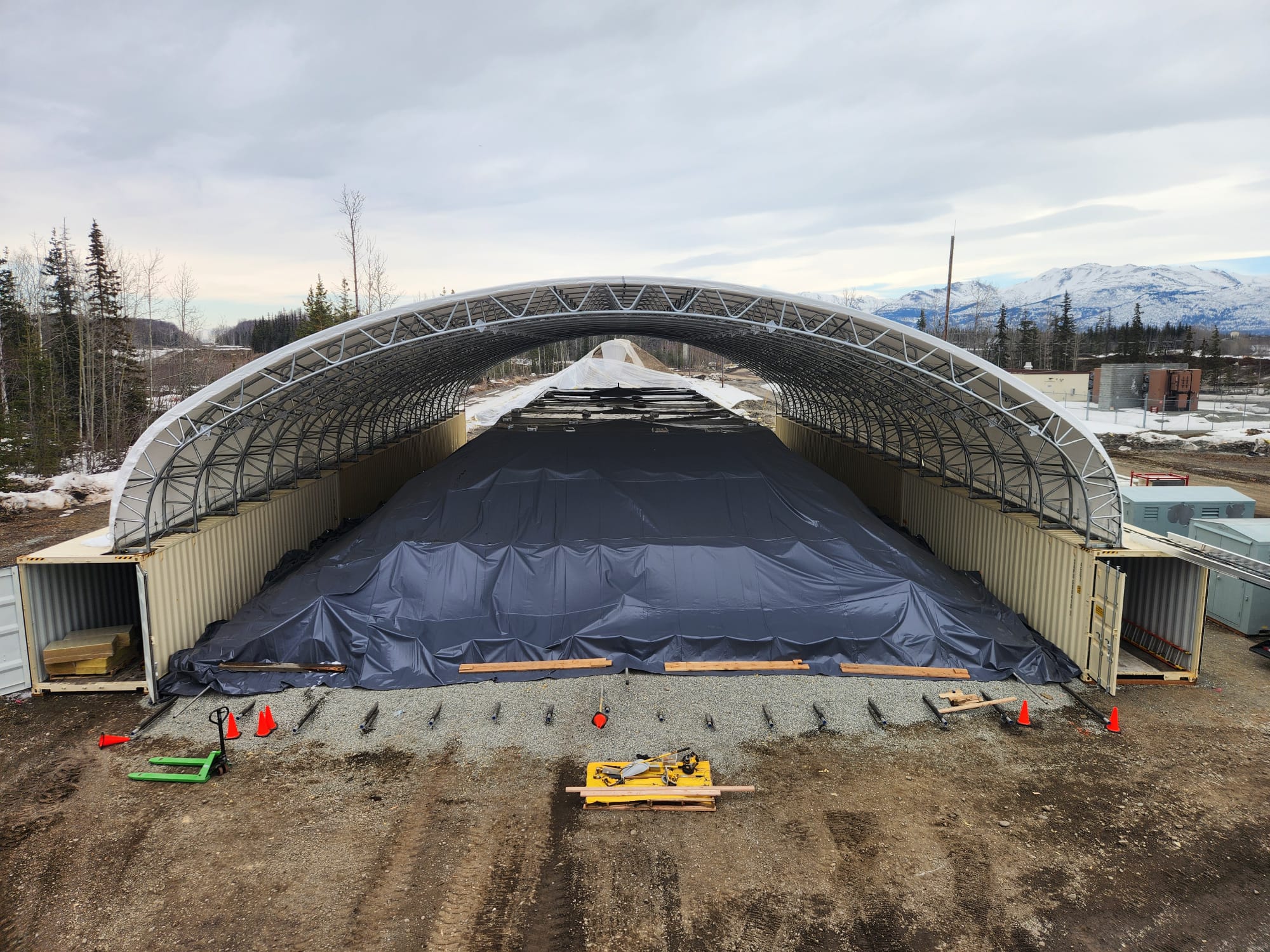Fire training areas (FTA), where firefighters practiced extinguishing fuel-based fires by applying aqueous film
forming foams (AFFF), which contain per- and polyfluoroalkyl substances (PFAS), represent a significant source of PFAS to groundwater. These compounds can persist in the environment for centuries. As the U.S. Environmental Protection Agency (EPA) has designated some PFAS compounds as hazardous substances under the Comprehensive Environmental Response, Compensation, and Liability Act (CERCLA), there is great interest in
remediating PFAS-impacted soils and groundwater, especially at FTAs.
Funded by the Department of Defense’s (DOD) Environmental Security Technology Certification Program (ESTCP), TRS Group (TRS) has completed two field demonstration projects. At an ESTCP-funded project in
partnership with DOD’s Defense Innovation Unit (DIU), TRS is currently remediating a 2,000 cubic yard soil pile.
Applying thermal conduction heating (TCH), TRS can achieve soil temperatures in excess of 400 degrees Celsius, thermally treating PFAS and treating the vapors at the surface. The method allows TRS to treat all soil types, including clay, and also asphalt, concrete and other debris often found at fire training areas. Thus, TRS is able to remove a long-term PFAS source from affecting groundwater quality.

A typical fire training area has a paved circle, generally concrete or asphalt. PFAS contamination also impacts the surrounding soils and underlying vadose zone. Further, runoff may cause the contaminants to spread to the
surrounding areas, such as swales or lowlands.
The technical approach follows:
- Typically, a consulting engineering firm will determine the depths and areal extent of impacted soils, debris, concrete and asphalt requiring treatment.
- A contractor will excavate nearby areas where runoff occurs causing PFAS impacts and place the soil on top of the FTA soil, building a treatment cell.
- TRS will place its TCH heaters and vapor extraction screens in the constructed cell. Additionally, TRS will
insulate the cell to minimize heat losses. - Thereafter, TRS will connect the heaters and vapor collection system to our power and treatment equipment.
- TRS will operate the system for four to six months, thermally desorbing and treating the PFAS.
- TRS will restore the site and return the treated soil to its prior locations.
Adopting such an approach, property owners can minimize groundwater impacts and reduce their long-term liability.





